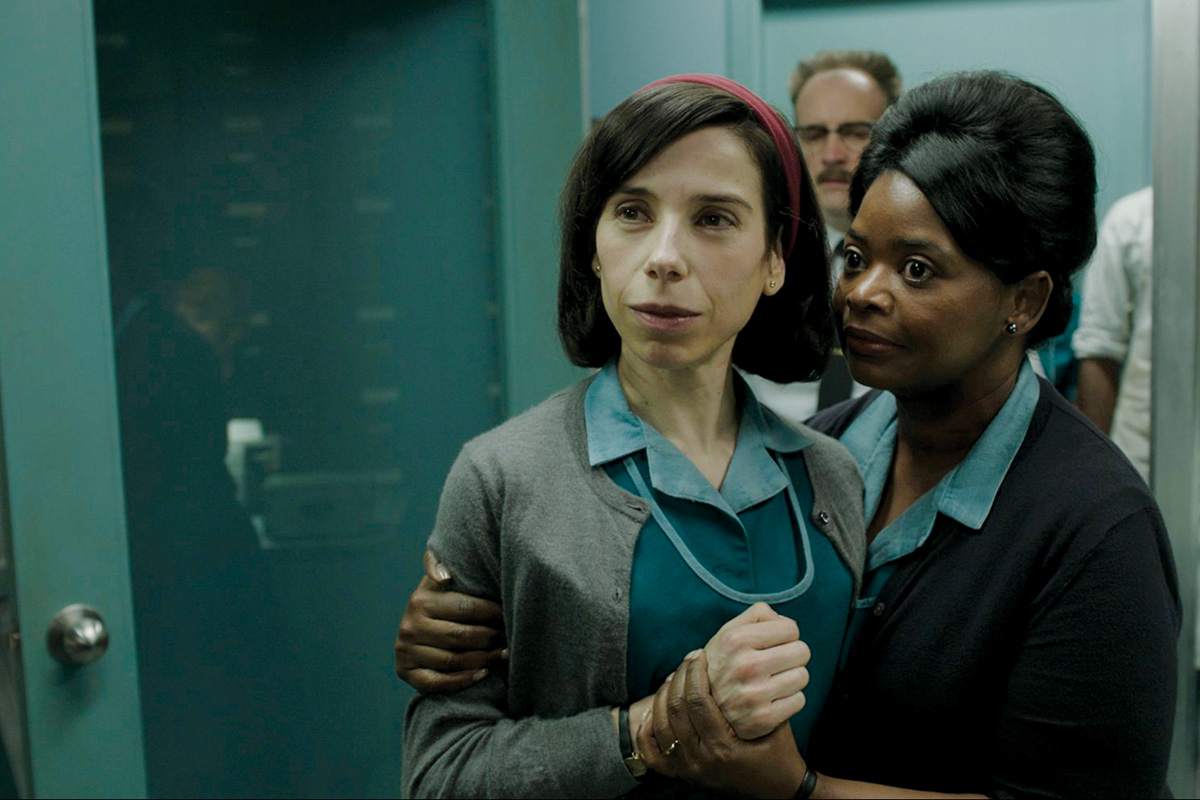It’s Oscar season. And, in fine keeping with red-carpet tradition, front-runner films are serving up disability love stories that end in death — and that’s no spoiler. Viewers are used to this cliché: the doomed disabled lead who overcomes all odds before dying. Which film? Take your pick.
Philadelphia, Million Dollar Baby, The Sea Inside and The Diving Bell and the Butterfly all use disability as a fated plot driver, often deploying the stale “supercrip” narrative where heroized disabled characters strive to do things non-disabled people do. Also predictable is non-disabled actors taking home awards for playing disabled characters — Eddie Redmayne’s 2015 best-actor win for his role as physicist and ALS patient Stephen Hawking is only the latest example in a long line. Echoing the #OscarsSoWhite campaign for increased racial diversity among award nominees, a group of 21 Hollywood professionals wrote an open letter to the Guardian last year: “It’s time for the diversity debate to embrace diversity itself, and begin a new era for the overlooked pool of growing talent among actors with . . . disability,” they asserted. The letter is an extension of decades of protest.
It’s no secret that producers have used disability stories to nab awards without contributing to disability communities. This year, the appropriation of disability culture is a little less straightforward.
You may unsubscribe from any of our newsletters at any time.
Let’s begin with the standard fare. Breathe is a biographical drama set in the lush English countryside. Produced by Jonathan Cavendish, the film recounts his father’s life story. It’s postwar England, and 28-year-old Robin Cavendish (Andrew Garfield) is suddenly struck with polio. Confined to bed, he faces a bleak future of staring up at a dank, institutional ceiling. “Let me die,” he mouths to his wife, Diana (Claire Foy). She pointedly responds, “Well, we can’t.” This is the implicit dynamic — a tragic husband and a dauntless wife. She is so determined to get past his death wish that she sneaks him out of the hospital.
It’s incredible, really. Robin is quickly set up with an electric wheelchair invented by a buddy. He vacations in Spain, and when his respirator collapses, the same friend crosses countries for a swift repair job. All the while, Diana secures steady childcare and a house without any apparent income. These happy coincidences — usurping the grip of medicine, finding out that your friends are accepting (and conveniently inventive!), and enjoying secure housing — are out of reach for many disabled people who experience discrimination across all of these spheres.
Though generally out of touch with reality, Breathe does reflect some very real disability issues, from incarceration to (you guessed it) physician-assisted death. As usual, Robin’s death is no surprise. Disability scholars explain that killing off disabled characters is a typical narrative device, both classic and popular. Charles Dickens’ A Christmas Carol hinges on the spectre of Tiny Tim’s death in a cruel and heartless Victorian England. More recently, the 2016 film Me Before You offers up the recently paralyzed Will Traynor, who chooses to die rather than consider how paralysis might look if he connected with other paralyzed people who live fulfilling lives. When disabled characters die, audiences do not have to be accountable for explaining how disabled lives are actually lived. It’s such a common trope that in Toronto and abroad, Me Before You’s opening nights were met with protests and the hashtag #MeBeforeEuthanasia — the disabled community’s firm rejection of the offensive premise that life is not worth living for people like them.
Strangely, too, Breathe spans from 1958 to 1981, a radically activist phase for the disabled people’s movement in Britain. Yet Robin emerges on the scene as a solo advocate denouncing institutionalization. (Breathe, of course, isn’t the first film to ignore disabled people’s history. A 2012 film called The Sessions, about a disabled man’s relationship with a sexual surrogate, drew criticism for its omission of disability activists’ work.)
On the other hand, Breathe doesn’t shy away from a few quips that speak to disability experience. “Are we plucky or pitiful?” Robin asks Diana during a campaign to fund wheelchairs, alluding to the roles disabled people must sometimes perform to be believable in their advocacy. And when the pair are denied funding from the Disability Research Foundation, Robin’s response, “Rules can be so paralyzing, can’t they?” points out the ways in which disability is less an individual problem than one of bureaucratic barriers.
While Breathe blurs the line between disability fiction and fact, another Oscar contender complicates disability representation even more fully. The Shape of Water, an inky fantasy from the gothic mind of Guillermo del Toro, offers a blooming relationship between an imprisoned amphibious creature (Doug Jones) and Elisa Esposito (Sally Hawkins), a non-verbal night janitor at a hidden government facility where the creature is held. It’s Cold War-era Baltimore, and Elisa, who communicates in American Sign Language, bonds with the captured creature (whom she first calls “it” and later “he”) using signs and delicate offerings of hard-boiled eggs.
“You don’t think that’s what the Lord looks like, do you?” asks the abusive Col. Richard Strickland (Michael Shannon), who dragged the creature up from South American waters. Strickland is the real monster — a racist patriarch who represents systems that oppress disabled folks. Elisa, too, is trapped because Strickland undervalues her “piss wiper” work and won’t learn her language. When Strickland commits to killing the sea creature, Elisa cleverly sneaks him out of containment.
Fleshy in both sex and violence, this lonely heart film offers a smart non-speaking character with an active libido, whose language is integral to the plot — and that’s a win for disabled people seeking more complex representation of themselves. Yet del Toro still uses disability to propel an affectionate love story that leaves real disabled people behind, especially when Elisa describes herself as “incomplete” and fantasizes that she can sing.
In some ways, these two films couldn’t be further apart. Breathe is a warm memoir; The Shape of Water is a dark, thrilling fairy tale. Even though they add nuance to traditional disability representation, both recycle the genre-crossing trope of the ill-fated disabled protagonist played by non-disabled actors.
It’s not difficult to imagine why disability communities are rolling their eyes and preparing to go on the defensive — again. It’s Oscar season, after all.













